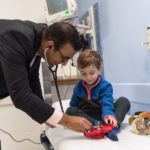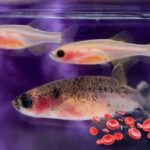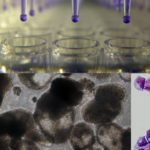A universal gene therapy for Diamond-Blackfan anemia is poised for clinical testing

Diamond-Blackfan anemia (DBA), first described at Boston Children’s Hospital in 1938, is a rare blood disorder in which the bone marrow cannot make mature, functioning red blood cells. Children with this life-threatening anemia have few treatment options. A small handful with a well-matched donor can be cured with bone marrow transplant, but most rely on steroids, which have side effects, or regular blood transfusions.
Gene therapy could also cure DBA, but there’s been a major challenge: The condition can be caused by any of at least 30 mutations, most of them discovered at Boston Children’s over the past 15 years by Hanna Gazda, MD, PhD, and Vijay Sankaran, MD, PhD. But now, preclinical research in Cell Stem Cell sets the stage for a universal gene therapy for DBA — regardless of the mutation.
“This is probably one of first examples where we can develop a gene therapy that can target dozens of mutations with a single vector,” says Sankaran.
All roads lead to GATA1
The known DBA mutations mostly affect ribosomes, structures within cells that play a key role in building the body’s proteins. But in 2012, as an intern in pediatrics, Sankaran found that a few patients instead had mutations in a gene called GATA1, a key regulatory factor that controls the earliest steps of red blood cell production.
Sankaran subsequently learned that the ribosomal mutations reduce the number of functional ribosomes, and that this prevents GATA1 from being produced. When he added the GATA1 protein directly back to blood stem cells from patients with DBA, the cells were better able to differentiate into red cells.
Developing a gene delivery system
Supported by Boston Children’s Therapeutic and Medical Device Accelerator, Sankaran’s team then set about developing a clinical-grade vector — an engineered, non-infectious lentivirus — to deliver the GATA1 gene. But there was another big challenge.
“If you put GATA1 into a cell, it differentiates right away into a red cell. It’s no longer a stem cell and won’t engraft in the bone marrow,” Sankaran explains. “We only wanted the gene to be expressed after the stem cells differentiate. That problem was not trivial.”
Led by Richard Voit, MD, PhD, in Sankaran’s lab (now at UT Southwestern), the researchers devised a way to control the expression of GATA1 so that it could be inserted in blood stem cells that travel to the bone marrow, but turn on only in progenitors of red blood cells. Testing showed increased production of mature red blood cells, while the stem cells themselves retained their stem cell activity.
Broader implications
Testing also found that the gene therapy vector inserted GATA1 only at the intended location in the genome, allaying concerns about unintentional insertion near a cancer-causing gene. “As far as we can tell, this approach is very safe,” Sankaran says.
The team is now filing an Investigational New Drug application with the Food and Drug Administration in hopes of starting a clinical trial. “We already have a clinical-grade vector produced and ready to go,” Sankaran says.
Boston Children’s Bone Marrow Failure Program currently sees about 50 patients with DBA, many of them potentially eligible for treatment.
Sankaran is equally excited about the implications for other gene therapies.
“The reach of any hematopoietic gene therapy could be broadened if you target the downstream mechanism rather than each of the individual components,” he says. “This could open up avenues for a whole other set of blood diseases.”
Learn more about the Bone Marrow Failure Program and research in the Sankaran lab. To inquire about partnership opportunities, email the Therapeutic and Medical Device Accelerator at TIDOAccelerator@childrens.harvard.edu.
Related Posts :
-

After 80 years, genetic causes of Diamond-Blackfan anemia come into view
In 1938, Louis K. Diamond, MD, and Kenneth Blackfan, MD, at Boston Children’s Hospital described a severe congenital anemia that ...
-

Teaming up to fast track a novel gene therapy for Diamond-Blackfan anemia
Looking at Lindsay Krieg, it’s impossible to tell she has spent her entire 29 years in an out of hospitals ...
-

A potential Diamond-Blackfan anemia treatment swims into view
Zebrafish, besides being popular in aquariums, make good stand-ins for studying human diseases. They share about 70 percent of their genes ...
-

Stem cell workaround cracks open new leads in Diamond Blackfan anemia
Diamond Blackfan anemia (DBA) has long been a disease waiting for a cure. First described in 1938 by Louis K. ...





